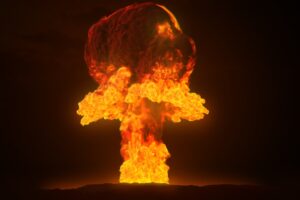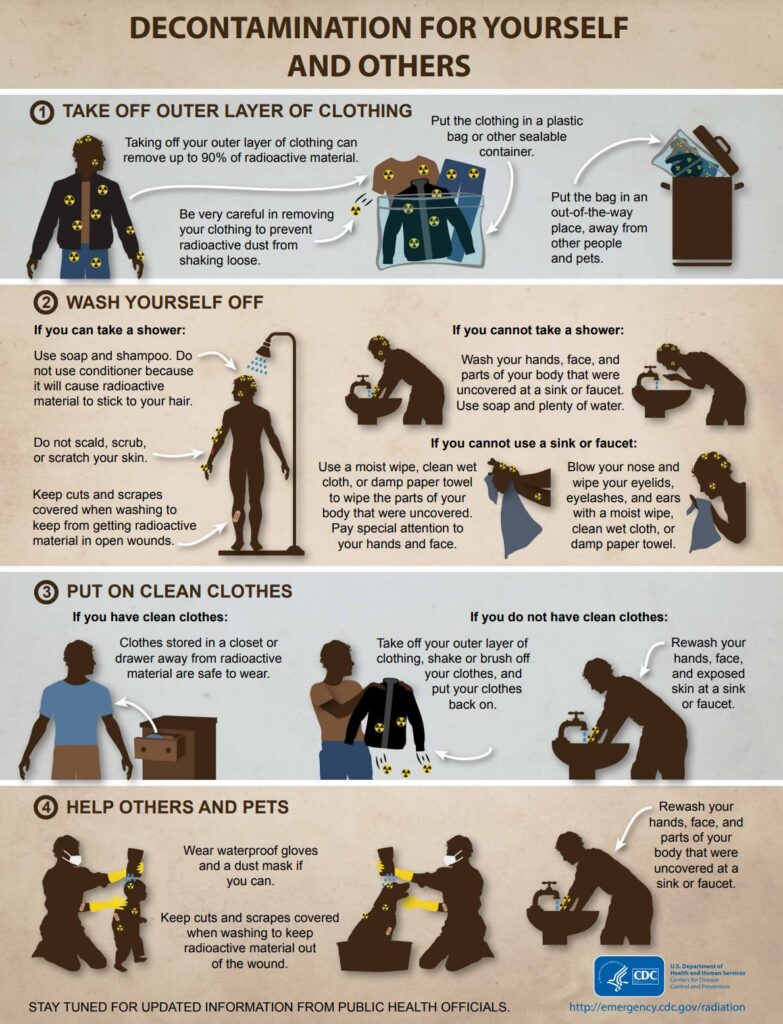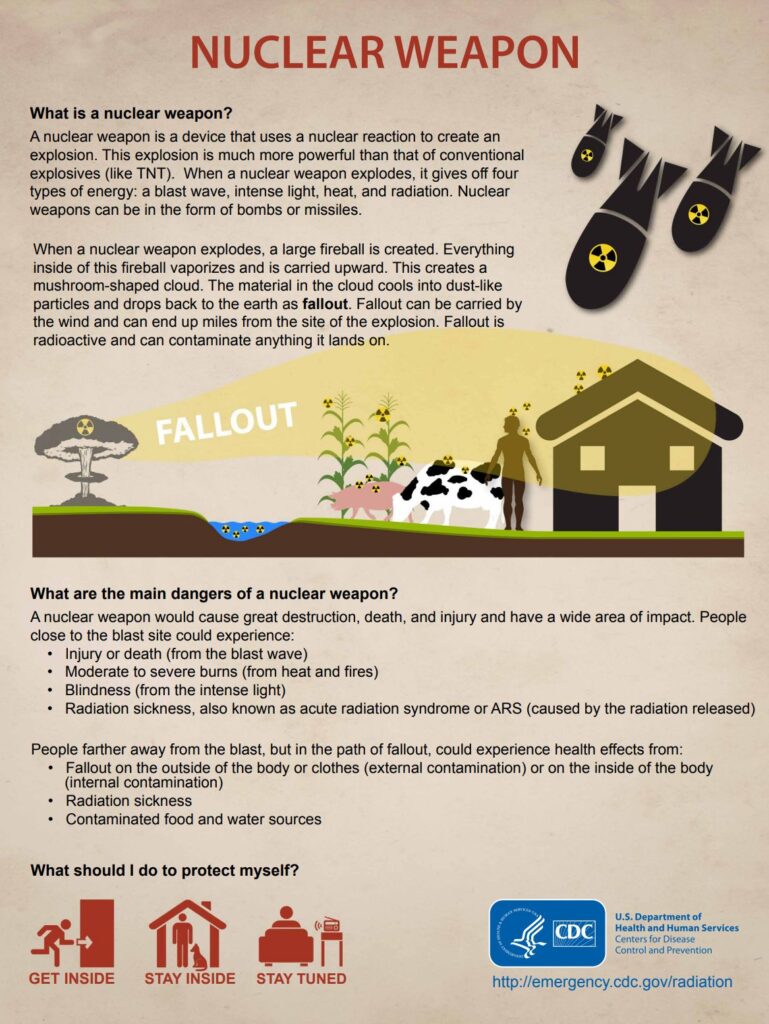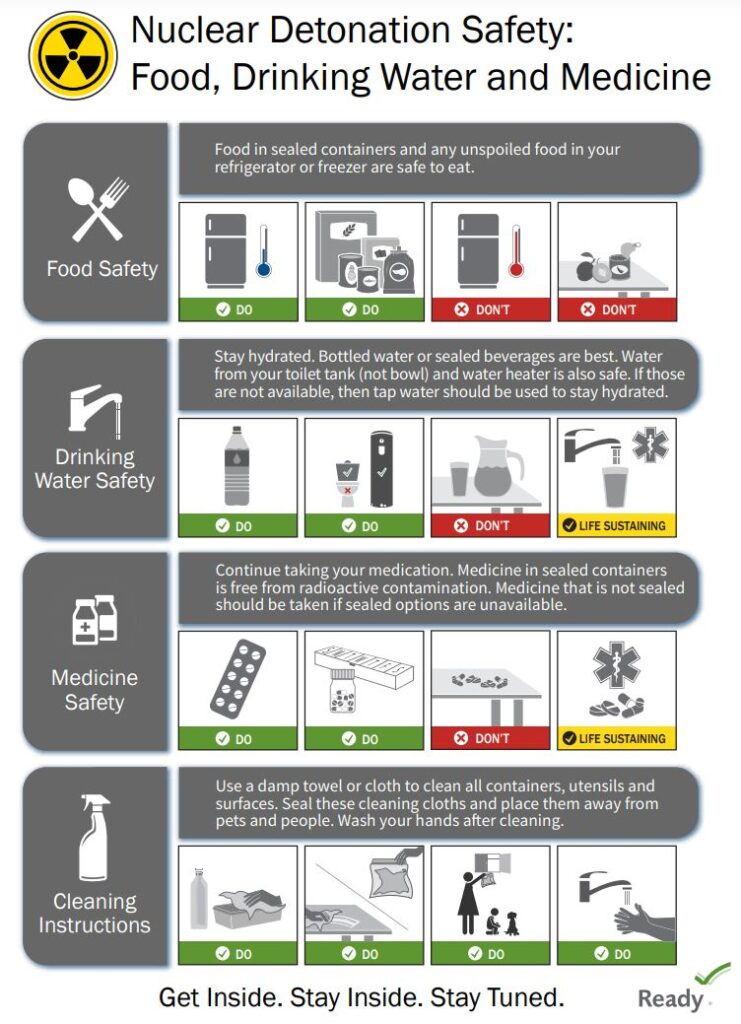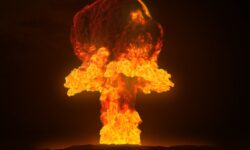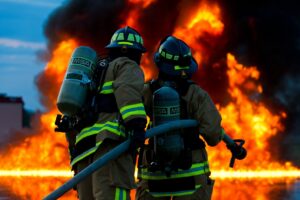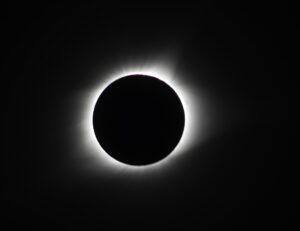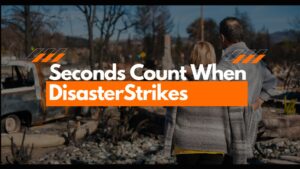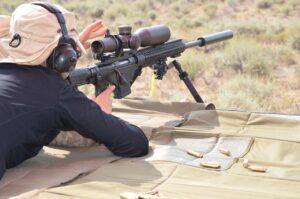Worldwide tensions are rapidly escalating. Russia has continued to make nuclear threats after its invasion of Ukraine. Russia has attacked nuclear power plants. They now openly discuss nuclear attacks on TV. What nuclear threats do we face and what should we do before, during, and after a nuclear attack?
How many nuclear weapons are there in the world?
There are an estimated 13,132 nuclear missiles in the world right now.
Russia has the largest nuclear stockpile of any nation with 6,257. The United States nuclear stockpile comes in second place with 5,550. The threat of nuclear war is one of the most aggressive threats any nation can make due to the long-term effects of radiation and lack of treatment options.
- Russia — 6,257 (1,458 active, 3039 available, 1,760 retired)
- United States — 5,550 (1,389 active, 2,361 available, 1,800 retired)
- China — 350 available
- France — 290 available
- United Kingdom — 225 available
- Pakistan — 165 available
- India — 156 available
- Israel — 90 available
- North Korea — 40-50 available (estimated)
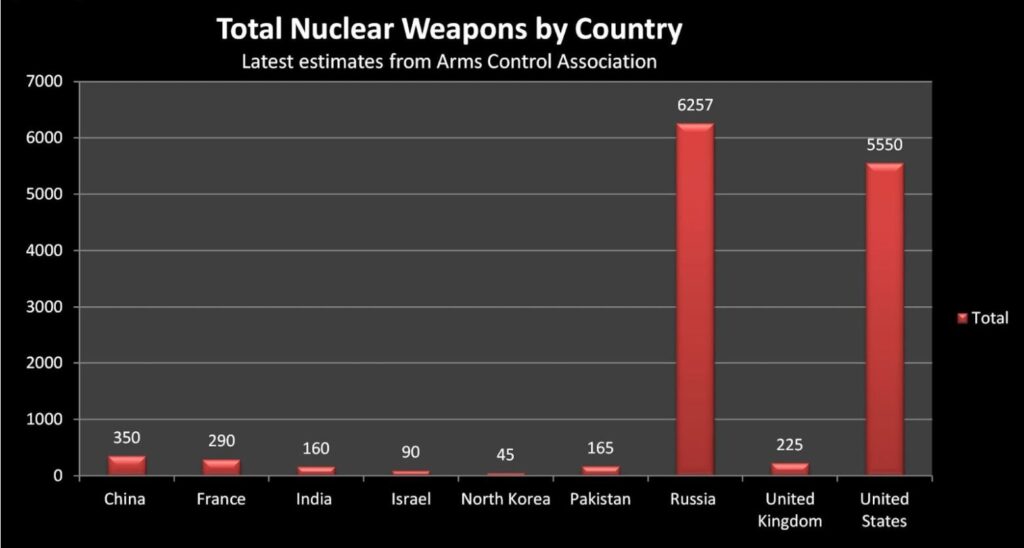
Nuclear war is a terrifying concept for all countries. Preventing nuclear war can be a very unifying goal and a common interest for every rational nation.
Preparing a Nuclear Shelter
Location
According to ready.gov, you will have 10 minutes or more to find safe shelter. It takes time for the nuclear fallout to settle. The worst location to be is outside or in a vehicle.
The safest location for you could be a home, store, or retail place nearby. Have as many walls between you and outside as possible. Be in the basement or at the lowest level possible. Assess your community for nearby shelter options if your current location is inadequate.
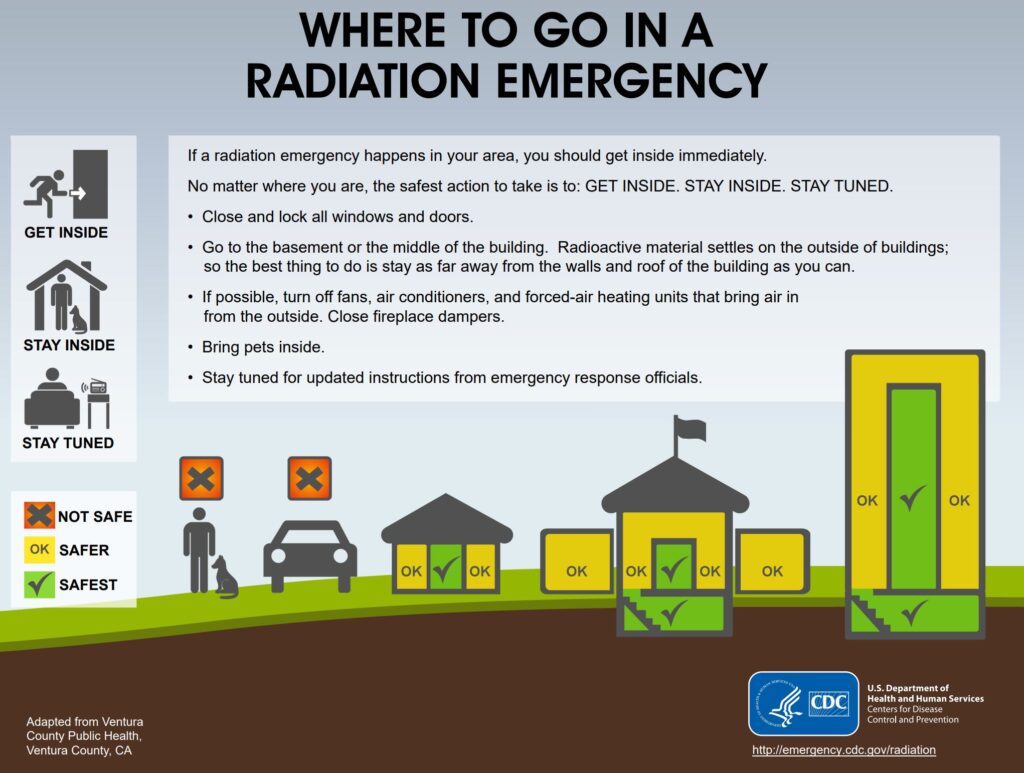
Items to have in a nuclear shelter
Your emergency shelter/nuclear shelter should include the following items:
- Food
- Water
- Battery-powered/hand crank Emergency Radio
- Change of clothes and shoes
- Medicine
- Flashlight
- Cellphone
- First aid kit
- Plastic sheet & duct tape
- Entertainment
If you cannot store these items ahead of time in your shelter, have a go-bag ready with the most essential items. Do not delay getting to a shelter to collect items.
Getting to your nearest shelter during a nuclear event
Time is critical during a nuclear event, and you must act immediately. If you are in a vehicle or outside, it will be even more critical. Consider buildings/businesses that may work as shelters in an emergency along routes you commonly take.
Outer walls and the roof allow the higher levels of radiation through. The best shelter is in a basement or in the middle of a building.
Surviving a nuclear attack in a shelter
Decontamination before entering your shelter
If you have been exposed to fallout (exposed outside for over 10 minutes after the blast), you need to remove as much nuclear fallout as possible before going inside.
Be inside before fallout begins!
Remove your clothing before entering the shelter. Leave your clothing and shoes outside.
Shower immediately upon entry using soap and water to rinse off your skin. Do not scrub your skin. The radioactive dust should easily wash off.
If you are exposed to radioactive elements, do not shake your head or make wild movements. You want the dust to wash off or drop to the ground. Fast or panicked movements such as shaking your head can scatter the radiation.
Note: Do not use conditioner as it can cause nuclear fallout to stick to your hair.
Removing your clothing can eliminate up to 90% of the radioactive contamination on you.
Have a change of clothing in your shelter or sealed in your go-bag.
Once you are inside your nuclear fallout shelter
Cover doors, close fireplaces, and block vents. Turn off the AC/HVAC and fans. Again, you want as little air disturbance as possible.
Avoid touching your eyes, nose, and mouth as much as possible.
Stay inside for at least 12-24 hours and wait for an all-clear emergency announcement. The highest levels of radiation will drop off exponentially. If you don’t have a way to be notified or have not heard an update, you can wait for 72 hours to decrease your risk of exposure to radiation even more.
Medication to prevent radiation poisoning
ThyroSafe or potassium iodide can be used as an emergency drug during a nuclear event.
“ThyroSafe is used during a nuclear radiation emergency to block radioactive iodine from entering your thyroid gland. For this purpose, the medicine is usually taken only once or twice.”
–Drugs.com
“For thyroid protection after nuclear radiation exposure, take the medicine as soon as possible after instructed by public officials. If you are told to take a second dose, wait at least 24 hours after you took the first dose. Use only as many doses as public officials tell you. Taking more of this medicine will not make it work better or faster, and may increase the risk of side effects.”
Click here for an FAQ on potassium iodide
Additional resources
CDC Radiation Emergencies
Ready.gov Nuclear Explosion
More from Red Sky Ready
Ukraine Invasion: 9 Steps Everyone Should Take Now
See our Disaster Dashboard for current severe weather outlook, radar, river levels, and more!
Join our email to hear about new resources to help you stay on top of severe weather outbreaks
- How to Shelter in Place During a Nuclear Event
- How to sleep in your car overnight
- How to prepare for power outages
- Preparing for Severe Weather
- How to Help Someone Who is on Fire
- How To Get Help When 9-1-1 Is Down
- Does a Solar Eclipse Really Warrant a State of Emergency?
- The Coming Digital Apocalypse?
- Disaster Survival: Do These 3 Things Within 60 Seconds
- 5 Disaster Relief Tips for a Major Earthquake Response
- Can We Shoot the Chinese Balloon Down?
- Incident Management Team: Tips for a Successful Deployment
- TC001 Best New Thermal Camera? Review for TOPDON TCView
- 5 Ways To Stop Overpaying For Healthcare
- Preparing Your Pets for Disaster
- Is International Travel Safe? How To Reduce Your Risks While Traveling Abroad

